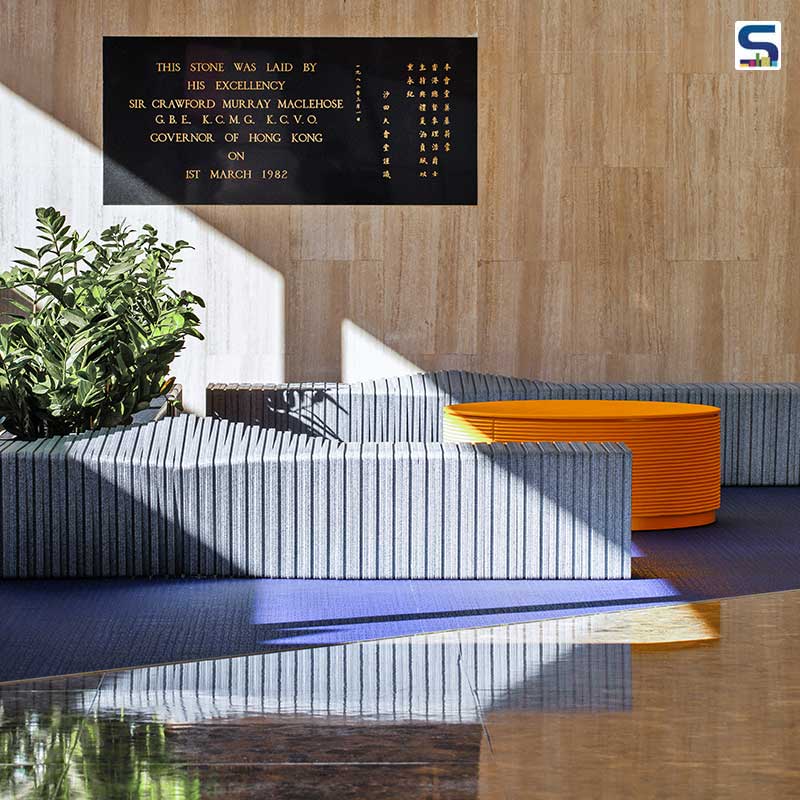
A couple of years ago when Hong Kong-based HIR Studio had been invited to redesign the interiors of Sha Tin Town Hall, the design studio noticed the soul of the city – River Shing Mun – had been polluted from plastic waste. Its waste had been further drained into the sea, thereby making it unrecoverable. Led by architects Howard Chung and Irene Cheng, HIR Studio decided to recycle the plastic waste from the river by processing and remoulding it in a factory to create a series of benches for the citizens of Sha Tin. “We experienced the whole process from waste to manufacturing, and we witnessed the difficulty of the recycling industry, the issues related to the waste export policy, quality of recycled plastic pellets, and more,” recalls Chung, as it is for the first time in Hong Kong the public got to experience the joyous rebirth of plastic waste – which was once consumed, cleaned and categorized and recycled.
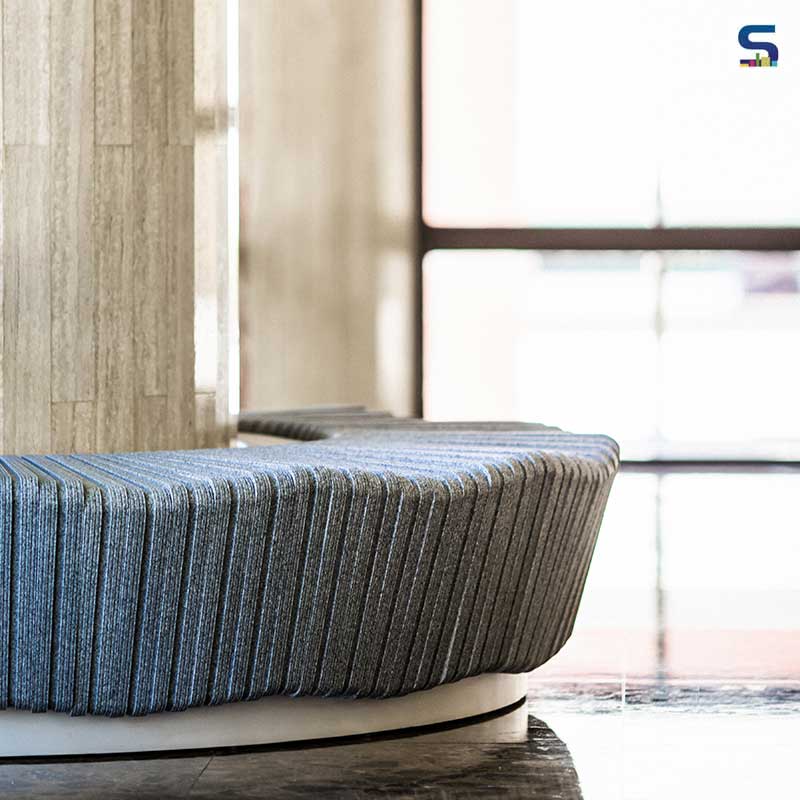 HIR Studio decided to recycle the plastic waste from the river by processing and remoulding it in a factory to create a series of benches.
HIR Studio decided to recycle the plastic waste from the river by processing and remoulding it in a factory to create a series of benches.
The process
The Leisure and Cultural Services Department commissioned HIR Studio to design a series of seating furniture by using recycled household plastic waste in collaboration with the community waste collection organizations in the district. Every day 40,000 items of plastic waste got drained into River Shing Mun, while 2,000 ton of plastic waste was dumped into landfills. Sha Tin citizens delivered their household plastic waste to the collection outlets over the weekend. The waste had been collected into one of the seven types of common plastics at these outlets. The plastic bottles were rinsed and packages dismantled before being categorized into seven types of plastic. Nearly 500 kg of HDPE (Type 2 plastic) bottles were collected in a span of two months for further processing at the Sha Tin Community Green Station, Sha Tin Recycle Centre and Sha Tin Waste-no-mall.
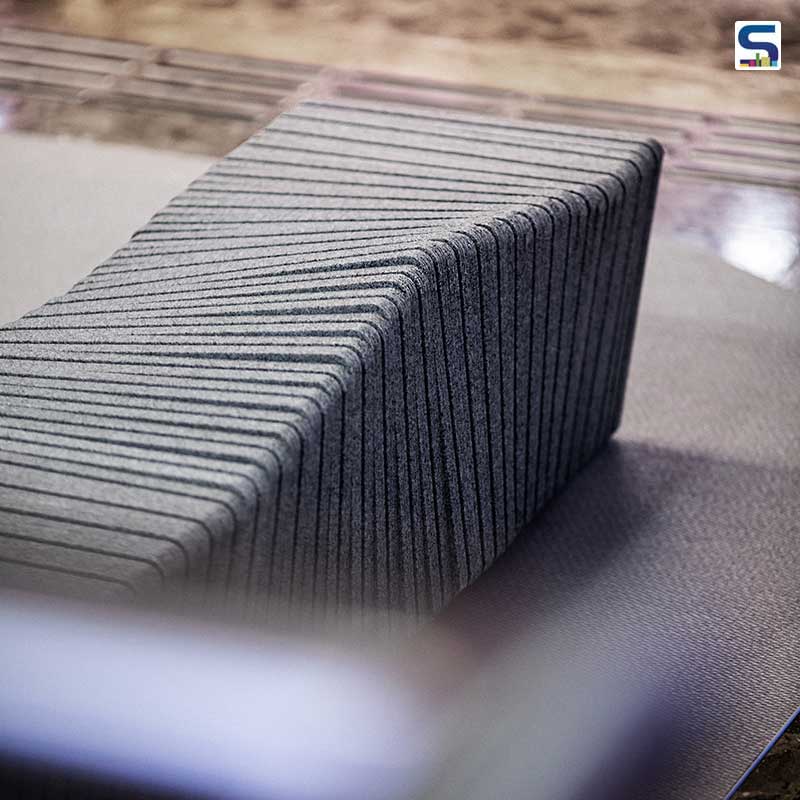 For the first time in Hong Kong the public have got to experience the joyous rebirth of plastic waste.
For the first time in Hong Kong the public have got to experience the joyous rebirth of plastic waste.
After categorizing the HDPE waste with machines, it was grounded into pellets. The pellets were then cleaned, disinfected and grounded into fine powder in the furniture factory. Upon cooling, they were de-moulded and sanded by hands. The pieces were then assembled firmly together with metal rods through the CNC technique.
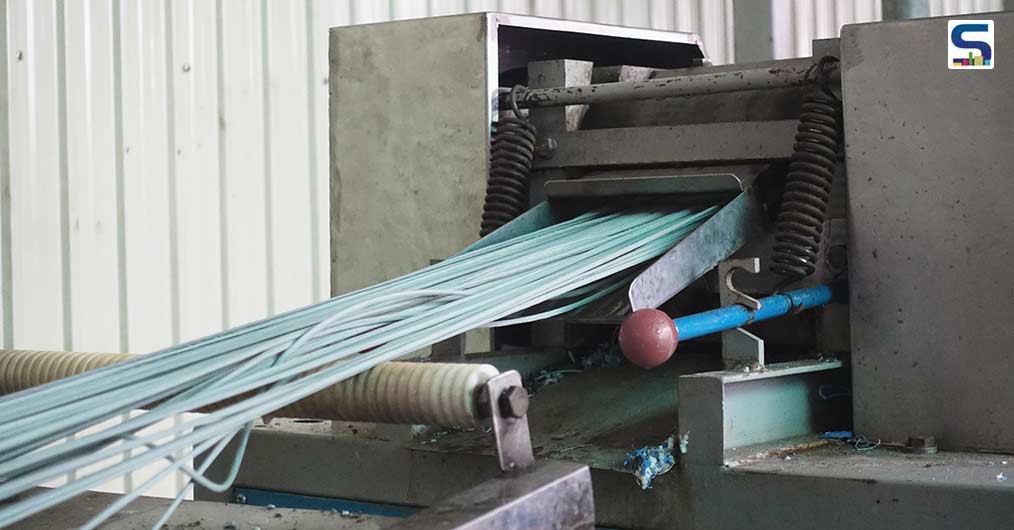 The design is based on From Sha Tin, For Sha Tin concept.
The design is based on From Sha Tin, For Sha Tin concept.
From Sha Tin, For Sha Tin
With the aim of creating a design on the theme ‘From Sha Tin, For Sha Tin,’ the duo decided to match the vibrant interiors of the Town Hall. Equivalent to the blue and orange reception space and box office, the studio fashioned the seating with the support of the Sha Tin Town Hall.
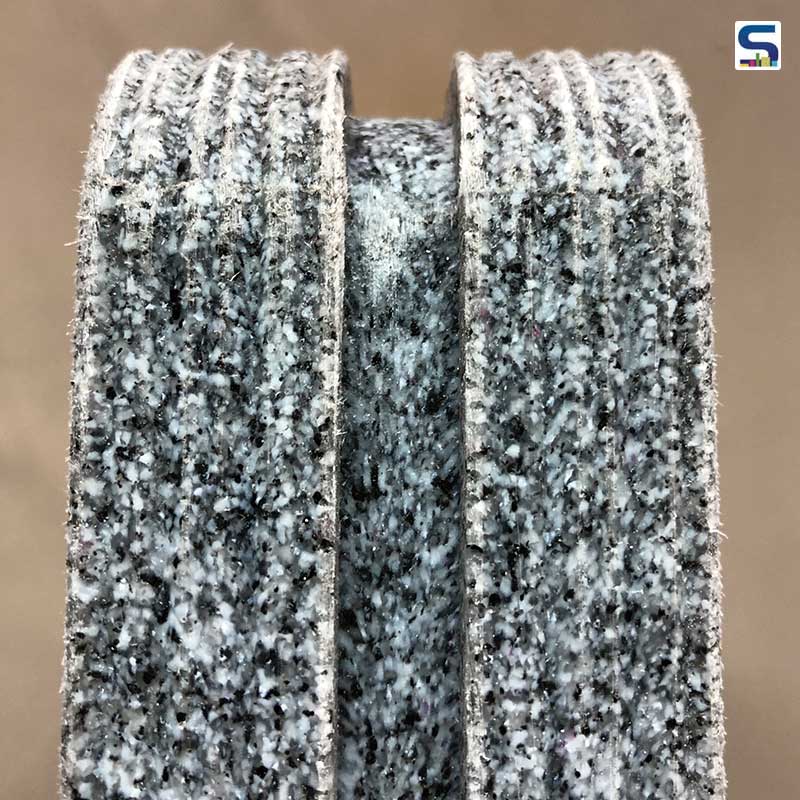 The studio fashioned the seating in regards to the interiors of the Town Hall.
The studio fashioned the seating in regards to the interiors of the Town Hall.
The benches are composed of trapezoidal plastic modules that are connected together. All pieces of the modules are identical, where each is rotated to a specific angle, forming a fluidic, intriguing, curvilinear shape with rich texture.
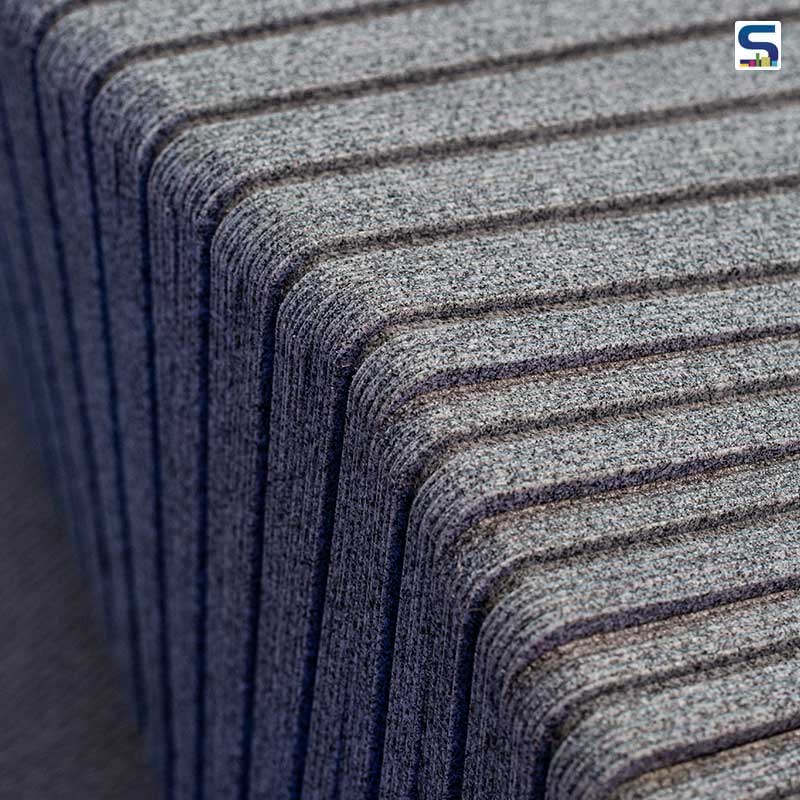 Made of homogeneous material – recycled plastic – connected by a simple structure, the benches can be easily recycled again.
Made of homogeneous material – recycled plastic – connected by a simple structure, the benches can be easily recycled again.
Made of homogeneous material – recycled plastic – connected by a simple structure, the benches can be easily recycled again.
Image credits: HIR Studio